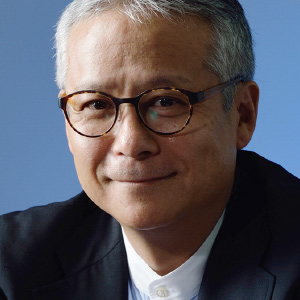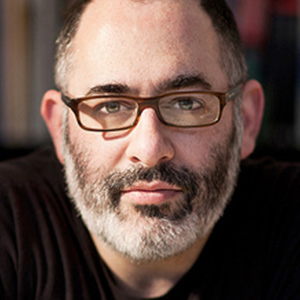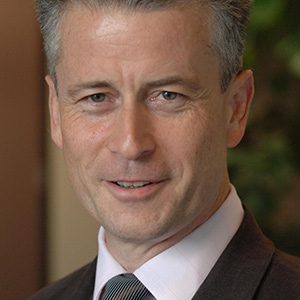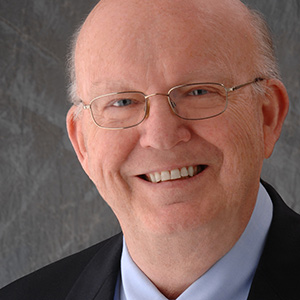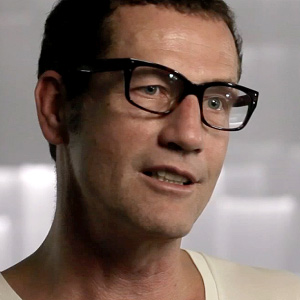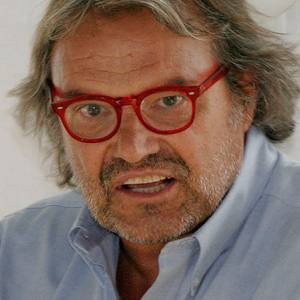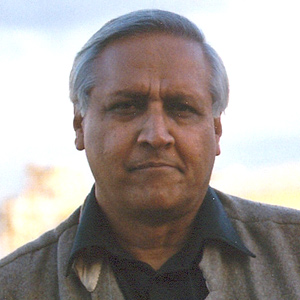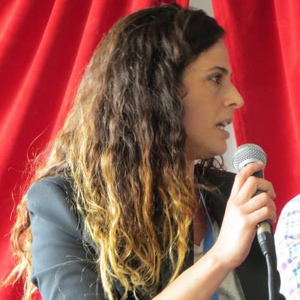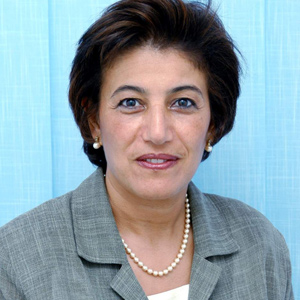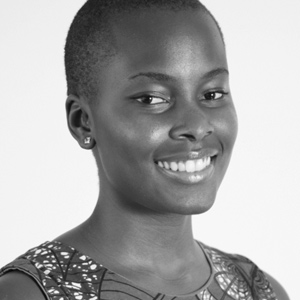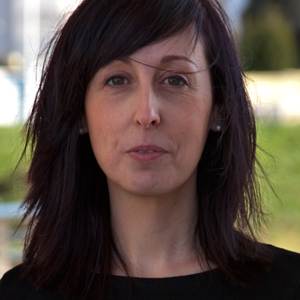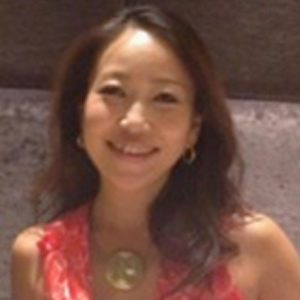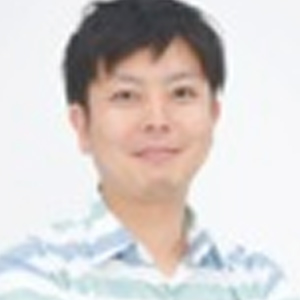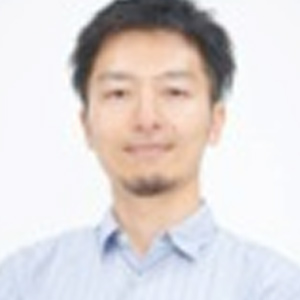
Mentors
Hiroshi Ishii
Golan Levin
Robert Madelin
K. Bradley Paxton
Joachim Sauter
Oliviero Toscani
Hiroshi Ishii (JP/US)
Hiroshi Ishii is a Jerome B. Wiesner Professor of Media Arts and Sciences at the MIT Media Lab. He is co-director of the Things That Think (TTT) consortium and director of the Tangible Media Group. He founded and currently directs the Tangible Media Group pursuing a new vision of Human Computer Interaction (HCI): “Tangible Bits” and “Radical Atoms.” Ishii and his team have presented their vision of “Tangible Bits” and “Radical Atoms” at a variety of academic, industrial design, and artistic venues (including ACM SIGCHI, ACM SIGGRAPH, Cannes Lions Festival, Aspen Ideas Festival, Industrial Design Society of America, AIGA, Ars Electronica, Centre Pompidou, and Victoria and Albert Museum,) emphasizing that the development of vision requires the rigors of both scientific and artistic review. In 2006 Ishii was elected to the CHI Academy by ACM SIGCHI. Prior to joining the MIT Media Lab from 1988-1994, Ishii led a CSCW research group at NTT Human Interface Laboratories Japan, where his team invented the TeamWorkStation and the ClearBoard.
Hiroshi Ishii is a Jerome B. Wiesner Professor of Media Arts and Sciences at the MIT Media Lab. He is co-director of the Things That Think (TTT) consortium and director of the Tangible Media Group. He founded and currently directs the Tangible Media Group pursuing a new vision of Human Computer Interaction (HCI): “Tangible Bits” and “Radical Atoms.” Ishii and his team have presented their vision of “Tangible Bits” and “Radical Atoms” at a variety of academic, industrial design, and artistic venues (including ACM SIGCHI, ACM SIGGRAPH, Cannes Lions Festival, Aspen Ideas Festival, Industrial Design Society of America, AIGA, Ars Electronica, Centre Pompidou, and Victoria and Albert Museum,) emphasizing that the development of vision requires the rigors of both scientific and artistic review. In 2006 Ishii was elected to the CHI Academy by ACM SIGCHI. Prior to joining the MIT Media Lab from 1988-1994, Ishii led a CSCW research group at NTT Human Interface Laboratories Japan, where his team invented the TeamWorkStation and the ClearBoard.
Golan Levin (US)
Golan Levin designs artifacts and experiences that investigate new forms of expressing reactions. In his work, he concentrates on the design of systems to simultaneously produce, modify and depict images and sounds. Levin teaches and does research at Carnegie Mellon University. He is the recipient of an Award of Distinction in the 2012 Prix Ars Electronica’s Hybrid Art category.
Golan Levin designs artifacts and experiences that investigate new forms of expressing reactions. In his work, he concentrates on the design of systems to simultaneously produce, modify and depict images and sounds. Levin teaches and does research at Carnegie Mellon University. He is the recipient of an Award of Distinction in the 2012 Prix Ars Electronica’s Hybrid Art category.
Robert Madelin (UK/BE)
Robert Madelin is the Director-General responsible for the Digital Agenda for Europe. He was educated in England at the Royal Grammar School, High Wycombe and at Magdalen College, Oxford. He has also studied at the Ecole Nationale d’Administration in Paris. Born in 1957, a British civil servant since 1979, Robert Madelin has served in the Commission since 1993: in his current post since 2010; as Director-General for Health and Consumer Policies from 2004 to 2010; on trade and investment policy before that.
Robert Madelin is the Director-General responsible for the Digital Agenda for Europe. He was educated in England at the Royal Grammar School, High Wycombe and at Magdalen College, Oxford. He has also studied at the Ecole Nationale d’Administration in Paris. Born in 1957, a British civil servant since 1979, Robert Madelin has served in the Commission since 1993: in his current post since 2010; as Director-General for Health and Consumer Policies from 2004 to 2010; on trade and investment policy before that.
K. Bradley Paxton (US)
K. Bradley Paxton graduated with a Bachelor of Science degree in electrical engineering from Rensselaer Polytechnic Institute, a Master of Science degree in applied mathematics, and a Doctorate in electrical engineering from the University of Rochester. During his 32-year career at Eastman Kodak, he served as general manager and vice president of both the Electronic Photography and the Printer Products Divisions, and retired in 1992 as director of the Electronic Imaging Research Laboratories. His company, Advanced Document Imaging (ADI, LLC), helped the U.S. Census Bureau develop and use electronic imaging methods to process the Year 2000 Decennial Census, and to make process improvements for the 2010 Census.
K. Bradley Paxton graduated with a Bachelor of Science degree in electrical engineering from Rensselaer Polytechnic Institute, a Master of Science degree in applied mathematics, and a Doctorate in electrical engineering from the University of Rochester. During his 32-year career at Eastman Kodak, he served as general manager and vice president of both the Electronic Photography and the Printer Products Divisions, and retired in 1992 as director of the Electronic Imaging Research Laboratories. His company, Advanced Document Imaging (ADI, LLC), helped the U.S. Census Bureau develop and use electronic imaging methods to process the Year 2000 Decennial Census, and to make process improvements for the 2010 Census.
Joachim Sauter (DE)
After graduating from the academy of fine arts in Berlin, Joachim Sauter studied at the German Academy for Film and Television, Berlin. Since the early 1980s, he has been working as a media artist and designer. From the beginning, Joachim Sauter has focussed on digital technologies and is experimenting how they can be used to express content, form, and narration. Fuelled by this interest, he founded ART+COM in 1988 together with other artists, designers, scientists and technologists. Their goal was to practically research this new up-and-coming medium in the realm of art and design. Until now, he is leading this interdisciplinary group. In the course of his work he was invited to participate on many exhibitions. Beside others he showed his work at Centre Pompidou Paris, Stejdilik Museum Amsterdam, Museum for Contemporary Art Sidney, Deichtorhallen Hamburg , Kunsthalle Wien, Venice Biennial,ICC Tokyo, Getty Center Los Angeles, MAXXI Rom. Since 1991 he is full professor for New Media Art and Design at the University of the Arts Berlin and since 2001 adjunct professor at UCLA, Los Angeles.
After graduating from the academy of fine arts in Berlin, Joachim Sauter studied at the German Academy for Film and Television, Berlin. Since the early 1980s, he has been working as a media artist and designer. From the beginning, Joachim Sauter has focussed on digital technologies and is experimenting how they can be used to express content, form, and narration. Fuelled by this interest, he founded ART+COM in 1988 together with other artists, designers, scientists and technologists. Their goal was to practically research this new up-and-coming medium in the realm of art and design. Until now, he is leading this interdisciplinary group. In the course of his work he was invited to participate on many exhibitions. Beside others he showed his work at Centre Pompidou Paris, Stejdilik Museum Amsterdam, Museum for Contemporary Art Sidney, Deichtorhallen Hamburg , Kunsthalle Wien, Venice Biennial,ICC Tokyo, Getty Center Los Angeles, MAXXI Rom. Since 1991 he is full professor for New Media Art and Design at the University of the Arts Berlin and since 2001 adjunct professor at UCLA, Los Angeles.
Oliviero Toscani (IT)
Oliviero Toscani is a photographer, best-known worldwide for designing controversial advertising campaigns for Italian brand Benetton from 1982 to 2000. After obtaining his diploma at the Kunstgewerbeschule in Zurich, he started working with different magazines, including Elle, Vogue, L’Uomo Vogue and Harper’s Bazaar. In 1982 he started working as Art Director for the Benetton Group. In the early 1990s, Toscani co-founded the magazine Colors (also owned by Benetton). In 2005, he sparked controversy again with his photographs for an advertising campaign for the men’s clothing brand Ra-Re. In September 2007, a new campaign against anorexia was again controversial due to his shocking photography of an emaciated woman. A long-term Tuscany resident, in 2003 he created in collaboration with Regione Toscana a new research facility for modern communication called La Sterpaia.
Oliviero Toscani is a photographer, best-known worldwide for designing controversial advertising campaigns for Italian brand Benetton from 1982 to 2000. After obtaining his diploma at the Kunstgewerbeschule in Zurich, he started working with different magazines, including Elle, Vogue, L’Uomo Vogue and Harper’s Bazaar. In 1982 he started working as Art Director for the Benetton Group. In the early 1990s, Toscani co-founded the magazine Colors (also owned by Benetton). In 2005, he sparked controversy again with his photographs for an advertising campaign for the men’s clothing brand Ra-Re. In September 2007, a new campaign against anorexia was again controversial due to his shocking photography of an emaciated woman. A long-term Tuscany resident, in 2003 he created in collaboration with Regione Toscana a new research facility for modern communication called La Sterpaia.

Speakers
Sanjit Bunker Roy
Francesca Bria
Zoubida Charrouf
Panashe Chigumadzi
Lucia Garcia
Luis Miguel Girão
Derrick de Kerckhove
Sanjit Bunker Roy (IN)
Sanjit Bunker Roy is the founder and director of the Barefoot College. He received his formal education in The Doon School (1956-62) and St. Stephens College Delhi University (1962-1967). He was the Indian National Squash Champion in 1965, 1967 and 1971. His “real” education started when he dug open wells for drinking water as an unskilled labourer for 5 years (1967-1971). He established the only fully solar electrified Barefoot College in the deserts of Rajasthan in India 40 years ago. It is the only College in India built by the poor and managed by the rural poor who earn less than $ 1/day. Since then the based Barefoot approach has been implemented in over 30 of the Least Developed Countries, a total of 36,000 houses in 1,024 villages have been solar electrified by nearly 300 illiterate rural grandmothers. Without using the written or spoken word they have been trained in 6 months using only sign language in India in the Barefoot College to be solar engineers under a scheme called ITEC of the Government of India. Bunker Roy was identified as one of the 50 environmentalists who could save the planet by The Guardian in 2008 and as one of the 100 most influential people in the world by Time magazine in 2010.
Sanjit Bunker Roy is the founder and director of the Barefoot College. He received his formal education in The Doon School (1956-62) and St. Stephens College Delhi University (1962-1967). He was the Indian National Squash Champion in 1965, 1967 and 1971. His “real” education started when he dug open wells for drinking water as an unskilled labourer for 5 years (1967-1971). He established the only fully solar electrified Barefoot College in the deserts of Rajasthan in India 40 years ago. It is the only College in India built by the poor and managed by the rural poor who earn less than $ 1/day. Since then the based Barefoot approach has been implemented in over 30 of the Least Developed Countries, a total of 36,000 houses in 1,024 villages have been solar electrified by nearly 300 illiterate rural grandmothers. Without using the written or spoken word they have been trained in 6 months using only sign language in India in the Barefoot College to be solar engineers under a scheme called ITEC of the Government of India. Bunker Roy was identified as one of the 50 environmentalists who could save the planet by The Guardian in 2008 and as one of the 100 most influential people in the world by Time magazine in 2010.
Francesca Bria (IT)
Francesca Bria is a Nesta Senior Project Lead in the Nesta Innovation Lab. She is the EU Coordinator of the D-CENT project on decentralised platforms for direct democracy and social digital currencies and the she is the Principle Investigator of the DSI project on digital social innovation in Europe. Francesca Bria is a Researcher and Teaching Associate at Imperial College Business School in the Innovation Studies Centre-Digital Economy Lab. She has a background in social science and innovation economics with a PhD from Imperial College London an MSc in E-business and Innovation from the University College of London, Birkbeck. Francesca Bria is a member of the Internet of Things Council and an advisor for the European Commission on Future Internet and Smart Cities policy. She is also a member of the EC Expert Group on Open Innovation (OISPG) and a member of the European Research Cluster on the Internet of Things (IERC).
Francesca Bria is a Nesta Senior Project Lead in the Nesta Innovation Lab. She is the EU Coordinator of the D-CENT project on decentralised platforms for direct democracy and social digital currencies and the she is the Principle Investigator of the DSI project on digital social innovation in Europe. Francesca Bria is a Researcher and Teaching Associate at Imperial College Business School in the Innovation Studies Centre-Digital Economy Lab. She has a background in social science and innovation economics with a PhD from Imperial College London an MSc in E-business and Innovation from the University College of London, Birkbeck. Francesca Bria is a member of the Internet of Things Council and an advisor for the European Commission on Future Internet and Smart Cities policy. She is also a member of the EC Expert Group on Open Innovation (OISPG) and a member of the European Research Cluster on the Internet of Things (IERC).
Zoubida Charrouf (MA)
Zoubida Charrouf is Professor at the Faculty of Science at the University Mohammed V in Rabat and President of the Ibn Al Baytar Association in Morocco. Her field of research is the Phytochemistry of Moroccan medicinal plants and the valorization of their metabolites in cosmetics and nutraceuticals. In addition to fundamental and applied research, disseminates her research and creates income for the empowerment of the women in rural areas and for the conservation of the biodiversity. She has founded the first women’s cooperatives for the production and marketing of argan oil in Morocco and has contributed to the organization of argan oil chain value and its recognition as cosmetic ingredient as well as culinary and functionnel food in the word. Zoubida Charrouf is the author of more than 100 publications on argan and its derivatives and more than 300 papers conferences and presentations.
Zoubida Charrouf is Professor at the Faculty of Science at the University Mohammed V in Rabat and President of the Ibn Al Baytar Association in Morocco. Her field of research is the Phytochemistry of Moroccan medicinal plants and the valorization of their metabolites in cosmetics and nutraceuticals. In addition to fundamental and applied research, disseminates her research and creates income for the empowerment of the women in rural areas and for the conservation of the biodiversity. She has founded the first women’s cooperatives for the production and marketing of argan oil in Morocco and has contributed to the organization of argan oil chain value and its recognition as cosmetic ingredient as well as culinary and functionnel food in the word. Zoubida Charrouf is the author of more than 100 publications on argan and its derivatives and more than 300 papers conferences and presentations.
Panashe Chigumadzi (ZW)
Panashe Chigumadzi is a young and upcoming media executive passionate creating new narratives that work to redefine and reaffirm African identity. She is the founder and editor of Vanguard Magazine, a platform which aims to speak to the life of young black women in South Africa. She has media experience both in the corporate side working in the office of the Group Managing Director as the Project Executive of the Africa Business News (ABN) Group, as well as experience as a reporter for CNBC Africa and columnist and for Forbes Woman Africa and contributor to Forbes Africa. In 2013 Chigumadzi became a member of the World Economic Forum’s Global Shapers community, a network of young people who strive to make an impact in their communities.
Panashe Chigumadzi is a young and upcoming media executive passionate creating new narratives that work to redefine and reaffirm African identity. She is the founder and editor of Vanguard Magazine, a platform which aims to speak to the life of young black women in South Africa. She has media experience both in the corporate side working in the office of the Group Managing Director as the Project Executive of the Africa Business News (ABN) Group, as well as experience as a reporter for CNBC Africa and columnist and for Forbes Woman Africa and contributor to Forbes Africa. In 2013 Chigumadzi became a member of the World Economic Forum’s Global Shapers community, a network of young people who strive to make an impact in their communities.
Lucia Garcia (ES)
Lucia Garcia is the Managing Director of LABoral and law graduate at Universidad Complutense de Madrid with postgraduate studies in European Affairs and Cultural Institutions Management. She trained as a broker at BRS, Paris and as a risk analyst in Barclays Bank’s International Risk Management Department in London. After this training in Paris and London, she returned to Madrid to work as Coordinator of the International Fashion Week, Madrid and Feria de Madrid Convention Centre, later taking up the position as Deputy Director of ARCO, the International Contemporary Art Fair of Madrid.
Lucia Garcia is the Managing Director of LABoral and law graduate at Universidad Complutense de Madrid with postgraduate studies in European Affairs and Cultural Institutions Management. She trained as a broker at BRS, Paris and as a risk analyst in Barclays Bank’s International Risk Management Department in London. After this training in Paris and London, she returned to Madrid to work as Coordinator of the International Fashion Week, Madrid and Feria de Madrid Convention Centre, later taking up the position as Deputy Director of ARCO, the International Contemporary Art Fair of Madrid.
Luis Miguel Girão (PT)
Luis Miguel Girão is the founder of Artshare and a transdisciplinary artist and researcher in the application of technology as a tool for artistic expression. He is a PhD Candidate at the Planetary Collegium and Master of Arts in Design and Digital Media. He is member of the Centre for Sociology and Music Studies of the Faculty of Social Sciences and Humanities of the New University of Lisbon, Portugal. His main research subject matter is the development of new interfaces for audiovisual expression, at the moment focusing on bioelectromagnetics. In 2007, he was awarded the Bolsa Ernesto de Sousa prize that allowed him to do research and present results at the Experimental Intermedia Foundation, in New York City. He is expert in New Media for the Secretary of State of Culture, Portugal, as well as for the European Commission. He is collaborating with DG CONNECT in the crossings of ICT and ART and was coordinating ICT ART CONNECT 2013 of the European Commission.
Luis Miguel Girão is the founder of Artshare and a transdisciplinary artist and researcher in the application of technology as a tool for artistic expression. He is a PhD Candidate at the Planetary Collegium and Master of Arts in Design and Digital Media. He is member of the Centre for Sociology and Music Studies of the Faculty of Social Sciences and Humanities of the New University of Lisbon, Portugal. His main research subject matter is the development of new interfaces for audiovisual expression, at the moment focusing on bioelectromagnetics. In 2007, he was awarded the Bolsa Ernesto de Sousa prize that allowed him to do research and present results at the Experimental Intermedia Foundation, in New York City. He is expert in New Media for the Secretary of State of Culture, Portugal, as well as for the European Commission. He is collaborating with DG CONNECT in the crossings of ICT and ART and was coordinating ICT ART CONNECT 2013 of the European Commission.
Derrick de Kerckhove (CA)
Derrick de Kerckhove worked with Marshall McLuhan as translator and co-author and was Director of the McLuhan Program in Culture and Technology until 2008. Beside his interest in questions concerning communication, he supports new artistic developments that combine art, technology and emerged media communication. He is currently researching the effects of technology on the human consciousness.
Derrick de Kerckhove worked with Marshall McLuhan as translator and co-author and was Director of the McLuhan Program in Culture and Technology until 2008. Beside his interest in questions concerning communication, he supports new artistic developments that combine art, technology and emerged media communication. He is currently researching the effects of technology on the human consciousness.

Facilitators
Futaba Maehara
Asako Okuno
Kayo Otaka
Kazuko Tanaka
Hiroyuki Uechi
Ryohei Yonemitsu
Futaba Maehara (JP)
Futaba Maehara started her career with Hakuhodo in 1989 in account services, serving a wide array of companies from cosmetics companies to IT ventures for 10 years, mastering the basics of marketing communications. In 1999 Futaba was transferred to the R&D division, which coincided with the rapid development of the internet. She took part in the development and publishing of a new total communication structuring theory called Live Marketing, and took on a new assignment in the Creative Department to further expand this new theory. In 2007, Futaba was one of the developers for Hakuhodo’s Engagement Ring Planning methodology. With the mission of triggering innovation within the Hakuhodo group, she mentored over 10 new business entities for the internal venture project AD+VENTURE. Currently, Futaba is positioned in the Human Resources Development Division and mentors internal innovators, and is also involved in accelerating new business entities.
Futaba Maehara started her career with Hakuhodo in 1989 in account services, serving a wide array of companies from cosmetics companies to IT ventures for 10 years, mastering the basics of marketing communications. In 1999 Futaba was transferred to the R&D division, which coincided with the rapid development of the internet. She took part in the development and publishing of a new total communication structuring theory called Live Marketing, and took on a new assignment in the Creative Department to further expand this new theory. In 2007, Futaba was one of the developers for Hakuhodo’s Engagement Ring Planning methodology. With the mission of triggering innovation within the Hakuhodo group, she mentored over 10 new business entities for the internal venture project AD+VENTURE. Currently, Futaba is positioned in the Human Resources Development Division and mentors internal innovators, and is also involved in accelerating new business entities.
Asako Okuno (JP)
Asako Okuno started her career at Hakuhodo in 2005 with a background in graphic and information design. For the first three years she was in account services planning marketing, creative, promotion and branding executions for a toiletry brand. In 2008, she switched career paths and became a promotion planner, taking part in a wide array of planning from cross-media promotion to brand communication design. As of 2014 she is part of the Hakuhodo Kodo Design Research Institute. With the core thinking in “what makes products and people move”, Okuno focuses on emotional planning in the promotional and activation fields based on the affordance theory.
Asako Okuno started her career at Hakuhodo in 2005 with a background in graphic and information design. For the first three years she was in account services planning marketing, creative, promotion and branding executions for a toiletry brand. In 2008, she switched career paths and became a promotion planner, taking part in a wide array of planning from cross-media promotion to brand communication design. As of 2014 she is part of the Hakuhodo Kodo Design Research Institute. With the core thinking in “what makes products and people move”, Okuno focuses on emotional planning in the promotional and activation fields based on the affordance theory.
Kayo Otaka (JP)
Kayo Otaka started her career at Hakuhodo in 1990 as marketing strategy planner, mainly took part in projects pertaining to new product development and business development. Foreseeing that co-creation will become the marketing trend of the future, she established β–ban, the pilot company of Voice Vision in 2011. After expanding her portfolio, including projects with major corporations and government offices, Kayo proposed the business plan of Voice Vision to the Hakuhodo board members and successfully established Voice Vision in July 2013. She currently serves as CEO of Voice Vision, which provides co-creation open community services to clients of Hakuhodo.
Kayo Otaka started her career at Hakuhodo in 1990 as marketing strategy planner, mainly took part in projects pertaining to new product development and business development. Foreseeing that co-creation will become the marketing trend of the future, she established β–ban, the pilot company of Voice Vision in 2011. After expanding her portfolio, including projects with major corporations and government offices, Kayo proposed the business plan of Voice Vision to the Hakuhodo board members and successfully established Voice Vision in July 2013. She currently serves as CEO of Voice Vision, which provides co-creation open community services to clients of Hakuhodo.
Kazuko Tanaka (JP)
Kazuko Tanaka joined Hakuhodo in 1998 and started her career in account services, further expanding into new business development with leading foreign marketing firms—and at the same time having 3 children. Through her own experience of giving birth and raising children, Kazuko established “Hakuhodo Working Moms’ Link” in 2012, based on the belief that working mothers from different firms need a platform to share information and ideas. With the start up of Voice Vision in July 2013, and as one of its founding members, Kazuko currently serves as community producer and facilitates community projects. Lastly, through the numerous voices gathered via the face to face communication platform, Lunchcation R, which networks across 400 working mothers in 40 companies nationwide, and Delivering Working Mothers’ Voices Project which has 26,000 followers on facebook, Kazuko searches for a new culture and new meanings in working, parenting, and living.
Kazuko Tanaka joined Hakuhodo in 1998 and started her career in account services, further expanding into new business development with leading foreign marketing firms—and at the same time having 3 children. Through her own experience of giving birth and raising children, Kazuko established “Hakuhodo Working Moms’ Link” in 2012, based on the belief that working mothers from different firms need a platform to share information and ideas. With the start up of Voice Vision in July 2013, and as one of its founding members, Kazuko currently serves as community producer and facilitates community projects. Lastly, through the numerous voices gathered via the face to face communication platform, Lunchcation R, which networks across 400 working mothers in 40 companies nationwide, and Delivering Working Mothers’ Voices Project which has 26,000 followers on facebook, Kazuko searches for a new culture and new meanings in working, parenting, and living.
Hiroyuki Uechi (JP)
Hiroyuki Uechi is Managing Director and Executive Community Producer. He started with Hakuhodo in 2005 as marketing strategist, formulating communication and brand strategies along with development of new products and businesses. He served as lead for the Japanese Government social project, and specialized in corporate marketing innovation through social media, executing several projects superseeding the normal advertising framework. Hiroyuki is one of the founding members of Voice Vision.
Hiroyuki Uechi is Managing Director and Executive Community Producer. He started with Hakuhodo in 2005 as marketing strategist, formulating communication and brand strategies along with development of new products and businesses. He served as lead for the Japanese Government social project, and specialized in corporate marketing innovation through social media, executing several projects superseeding the normal advertising framework. Hiroyuki is one of the founding members of Voice Vision.
Ryohei Yonemitsu (JP)
Ryohei Yonemitsu began to work in a Marketing Research Firm in 2004 and transferred to Hakuhodo as Strategic Planner in 2009. He took part in projects relating to communication and brand strategy, new product development, and new business development for clients. Currently stationed in Osaka with the Kansai Marketing department, Ryohei Yonemitsu is in charge of community produce with Voice Vision.
Ryohei Yonemitsu began to work in a Marketing Research Firm in 2004 and transferred to Hakuhodo as Strategic Planner in 2009. He took part in projects relating to communication and brand strategy, new product development, and new business development for clients. Currently stationed in Osaka with the Kansai Marketing department, Ryohei Yonemitsu is in charge of community produce with Voice Vision.
You will find all information about the Future Innovators Summit that will take place from September 4th to 7th, 2014, in Linz on ars.electronica.art/c/future-innovators-summit!

